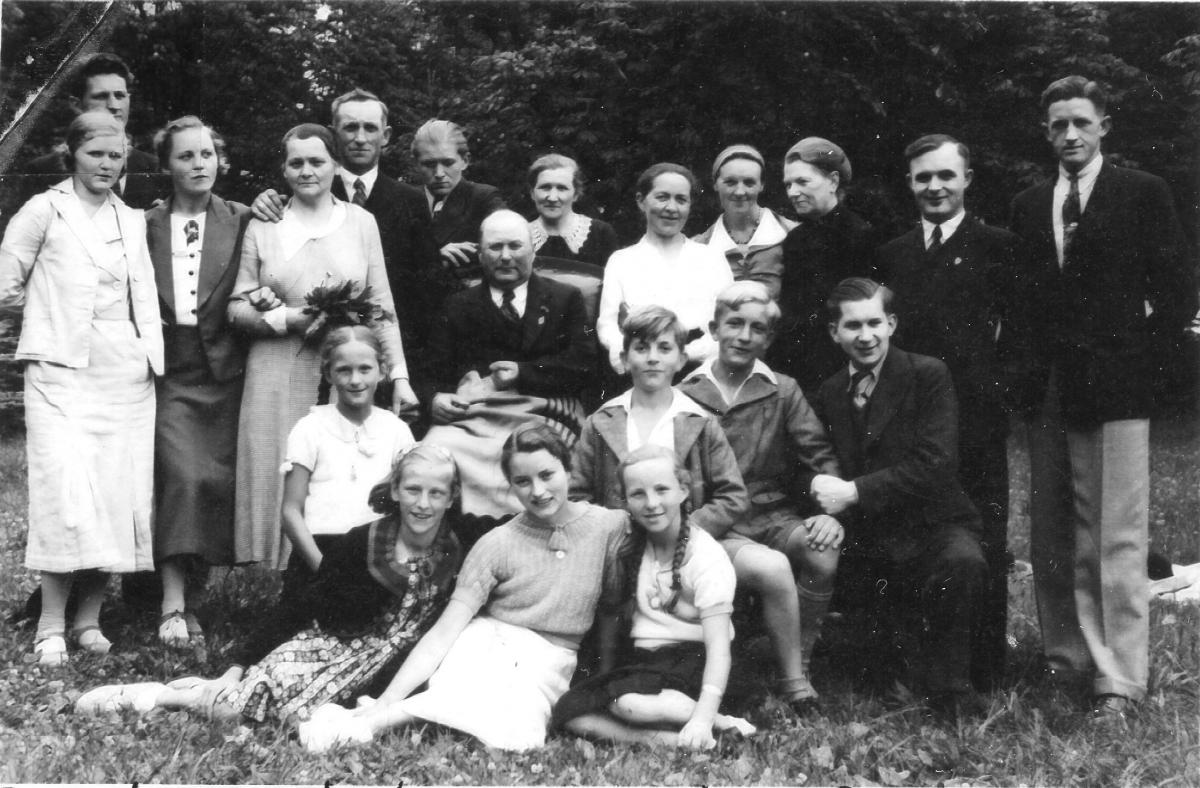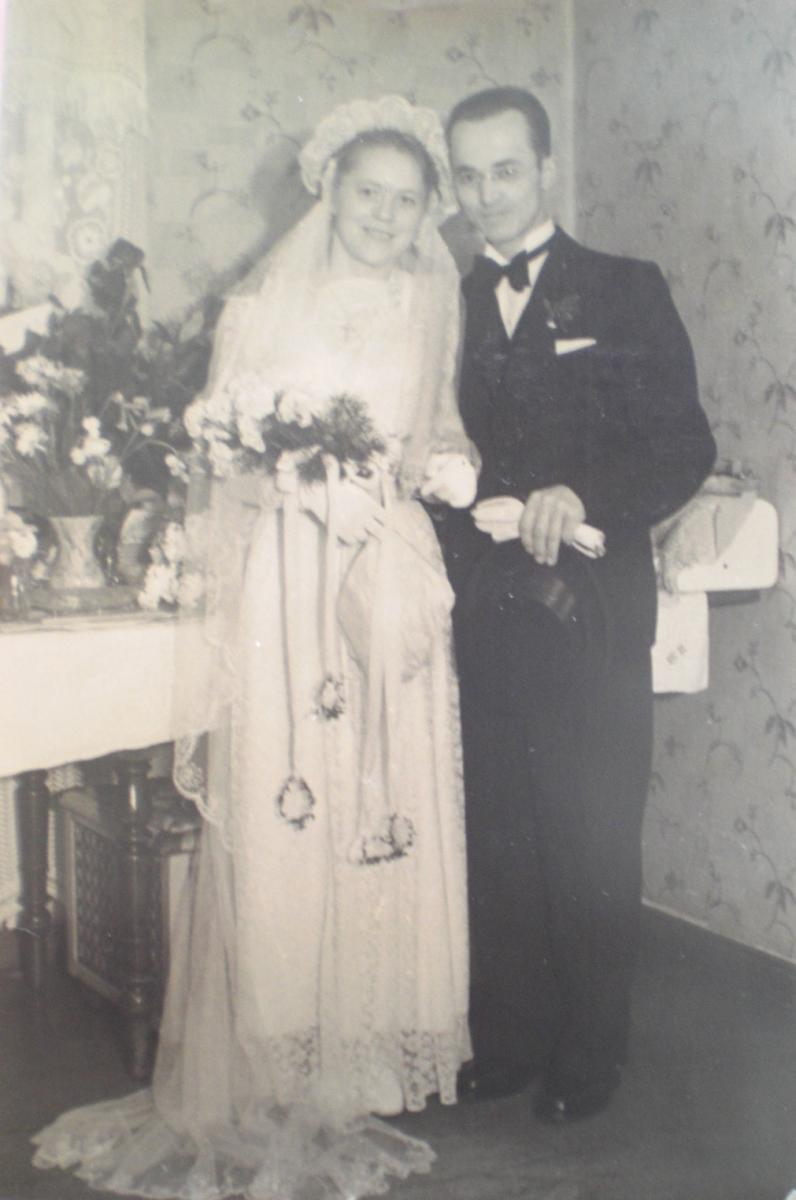Kolberg Branch, Stettin District
Roger P. Minert, In Harm’s Way: East German Latter-day Saints in World War II (Provo, UT: Religious Studies Center, Brigham Young University, 2009), 450-2.
In 1939, the historic Prussian province of Pomerania extended for more than three hundred miles along Germany’s Baltic Sea coast. The coast features gigantic sand dunes and has relatively few port cities. One of the larger cities very near the coast was Kolberg (now Kolobrzeg, Poland), located sixty-five miles northeast of Stettin.
| Kolberg Branch[1] | 1939 |
| Elders | 3 |
| Priests | 0 |
| Teachers | 1 |
| Deacons | 4 |
| Other Adult Males | 5 |
| Adult Females | 26 |
| Male Children | 0 |
| Female Children | 0 |
| Total | 39 |
With only about thirty thousand inhabitants, the city of Kolberg was home to a very small branch of The Church of Jesus Christ of Latter-day Saints. Prior to January 21, 1938, the branch was part of the Stolp (later Danzig) District of the mission.[2] This small branch officially included no children but was apparently quite active, as reflected in the following entries from the East German Mission history:
Thursday, March 17, 1938: “Programs, celebrating the organization of the Relief Society in the branches of Stettin and Kolberg, were held, in the latter city an attendance of sixty-one, in the former an attendance of seventy-five persons was reported.”[3]
Sunday, April 10, 1938: “Franz Schroder was appointed first and Paul Reimer second counselors in the Kolberg Branch Presidency.”[4]
Friday, April 29, 1938: “A spring festival for the Kolberg Branch Primary Association was held in Kolberg with an attendance of fifty-seven persons. All children, belonging to the Primary there, were those of friends.”[5]
Sunday, October 30, 1938: Ernst Reimer was appointed second counselor to the branch president.[6]
Sunday, October 30, 1938: The fall conference of the branch was held, with forty-three members and friends in attendance.[7]
Monday, 14 November 1938: A special meeting was held with Pres. Rees; attendance was twenty-five members and thirty-five friends.[8]
Saturday, 11 February 1939: “Elder Edward R. McKay, mission supervisor of Sunday Schools and chairman of the Mission Correlation Committee, visited with the different auxiliary organizations of the Kolberg Branch, Stettin District, discussed their problems, and suggested to them ways and means for improvement.”[9]
It is interesting to note the large numbers of children (apparently none of whom had parents who were Church members) who took part in meetings and festivities. The adult leaders of the branch likely had personalities that attracted children. At the same time, few families in Germany attended their own church services in those days.
Wynn S. Andersen, a missionary from Brigham City, Utah, served in Kolberg just before the war. He described the modest group of Saints who met in a Hinterhaus at Lindenstrasse 34: “We met in a single room with only about twelve members. I recall the family names Schröder and Reimers.”[10]
 Members of the Kolberg Sunday school posed for this picture in 1937 (I. Reimer Ebert)
Members of the Kolberg Sunday school posed for this picture in 1937 (I. Reimer Ebert)
Being a missionary in Kolberg was not without excitement, according to Elder Andersen: “When Elder Hilbert and I were tracting, he only wrote in our tracting book in hiding because he was afraid that the Gestapo would see him doing it.”[11] While in Kolberg, the missionaries witnessed some of the terrible acts of the Nazi Party hooligans on November 9, 1938—Reichskristallnacht (the “Night of Broken Glass”):
We heard a lot of noise and went downtown cautiously to see what was going on. There were a lot of people in front of a Jewish store. We saw party members in uniform smashing the windows. I saw them pushing a man around. They took a piano out of the store (possibly a music store) and smashed it up.
One of the principal ways in which the German Latter-day Saints differed in lifestyle from their friends and neighbors was in their strict health code. Ilse Reimer (born 1914) learned as a young woman that the health standards she was taught in Church, based on the Word of Wisdom, could earn her the respect of others. While attending a Nazi Party Christmas program for young women, she declined to drink the coffee that was served. She later wrote about what happened next:
Because my girl friend knew that I didn’t drink [coffee], she spoke with the other girls. When I came to their table, they were all sitting around it. I noticed to my astonishment that there was a cup full of cream at my place. All of the girls (I didn’t even know them all) had agreed to put their cream into my cup so that I would have something to drink. I was deeply touched by their love and understanding because they were not members of the Church.[12]
In January 1940, Ilse received a letter from President Thomas E. McKay of the East German Mission. He called her to serve as a full-time missionary in the office in Berlin. Although a young man in the nearby Stettin Branch, Fritz Ebert, was poised to ask for her hand in marriage, Ilse accepted the call and was on her way to Berlin in March. She served honorably for the next twenty-five months, visiting many districts of the Church in the East German Mission.[13]
Ilse Reimer was released as a missionary in April 1942. Mission supervisor Herbert Klopfer wrote her a gracious letter in recognition of her service. The following lines are included in that letter dated April 6, 1942:
The Lord looks with satisfaction upon you and the work that you always fulfilled with such loyalty and dedication. Nobody appreciates your industry and constant readiness to help in the promotion and orderly administration of the East German Mission in the war years 1940–42 more than your brethren in the mission leadership. . . . When you return to your loved ones, the spirit of missionary work will radiate among them, and they will have ample opportunities to hear of your experiences and to remember the hours you spent in the service of the Lord.[14]
Ilse Reimer and Fritz Ebert married in Kolberg that June and moved to Stettin. They survived the war and were parents when peace returned to Germany.
 Former missionary Ilse Reimer married Fritz Ebert in Kolberg on 20 June 1941 (I. Reimer Ebert)
Former missionary Ilse Reimer married Fritz Ebert in Kolberg on 20 June 1941 (I. Reimer Ebert)
It is highly probable that all members of the Kolberg Branch were evicted from their homes in the year that followed the war, during which time the territory was ceded to Poland. With the members gone, the Kolberg Branch slipped into obscurity by the summer of 1946. No members of the Kolberg Branch are known to have died during World War II.
Notes
[1] Presiding Bishopric, “Financial, Statistical, and Historical Reports of Wards, Stakes, and Missions, 1884–1955,” CR 4 12, 257.
[2] East German Mission Quarterly Reports, 1938, no. 10, East German Mission History.
[3] Ibid., no. 14.
[4] Ibid., no. 17.
[5] Ibid., no. 19.
[6] Ibid., no. 42.
[7] Ibid., no. 43.
[8] Ibid., no. 47.
[9] Ibid., 1939, no. 56.
[10] Wynn S. Andersen, interview by the author, Brigham City, Utah, October 19, 2006.
[11] The term “tracting” describes the process of taking their message from door to door.
[12] Ilse Reimer Ebert, autobiography (unpublished), 16; private collection.
[13] Ibid., 16–17. For stories from her mission experience, see the East German Mission chapter.
[14] Herbert Klopfer to Ilse Reimer, letter, April 6, 1942; private collection; trans. the author.
